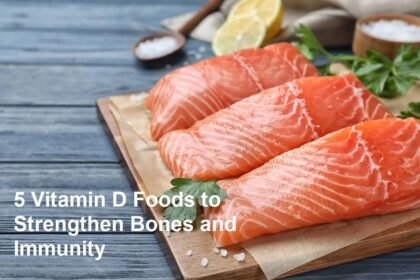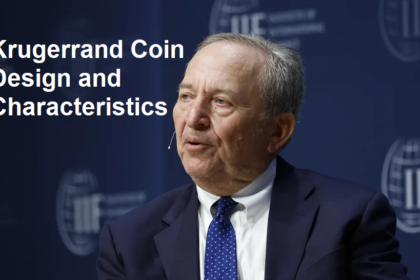Oligopoly is a form of market structure found in the world economy, where there is a small number of companies or producers that dominate an industry or market. This market structure is somewhere between a monopolistic market structure and perfect competition, with a few firms having significant control over the supply and price of the product. The main characteristics of an oligopoly are the presence of a few large firms that control a large share of the market, strategic interactions between firms, and high barriers to entry that keep new competitors out of the market. The main characteristics of an oligopoly include the existence of interdependence between companies operating in the market. Due to the small number of producers in this market structure, the actions of one firm can directly influence the performance and decisions of other firms. This leads to collusion or rivalry behavior, where companies tend to cooperate to achieve mutual benefits or compete with each other to capture market share.
In an oligopoly, entry barriers play an important role in maintaining the stability of the market structure. These barriers could be large economies of scale, strong brand power, or exclusive control over scarce resources. All these factors make it difficult for new companies to enter the market and compete with existing players. Therefore, companies operating in an oligopoly market tend to face lower competition and have the opportunity to achieve higher profits. As examples of oligopoly markets in the world economy, we can look at the automotive industry, telecommunications and pharmaceutical industries. In the automotive industry, several of the largest brands such as Toyota, General Motors, and Volkswagen dominate global market share. Meanwhile, in the telecommunications industry, companies such as AT&T, Verizon, and China Mobile have great influence over the international market. In the pharmaceutical industry, there are also several giant companies such as Pfizer, Roche and Novartis which control most of the market share for pharmaceutical products. Basically, oligopolies are present in various important economic sectors and often have a direct impact on our daily lives as consumers. The existence of oligopolies in some industries may ensure consistent products or services and more sophisticated research and development, but they also result in a lack of variety and innovation for consumers. In addition, for companies operating in oligopoly markets, it is very important to always monitor the strategies and actions of their competitors in order to gain competitive advantage and maintain a strong market position.
Types of Oligopoly
There are various types of oligopoly, including concentric oligopoly, monopolistic competition, and cartels. In this article, we will explain the characteristics and differences between the three types of oligopoly. Concentric oligopoly refers to a situation where a group of related companies together control the majority of the market share in an industry. These companies generally have close relationships and support each other to control prices and limit competition. Examples of industries that usually have a concentric oligopoly structure are the telecommunications, banking and energy industries.
Meanwhile, monopolistic competition is a form of market where many companies compete with each other by selling different but functionally similar products. They create product differentiation through packaging, branding, or certain product features to win consumer loyalty. Industries such as tourism, restaurants, and fashion are examples of monopolistic competition. Lastly, a cartel is a form of Oligopoly where a number of companies in an industry agree to work together to control prices and production. These cartels are usually secretly formed to gain greater profits and reduce the risk of competition. Although cartels are often illegal, there are some well-known examples such as OPEC (Organization of Petroleum Exporting Countries) that control crude oil production at the international level. With a better understanding of the different types of oligopolies, we can more effectively identify and evaluate their impact on the economy. Although oligopolies share some similar characteristics, their differences are critical in determining market strategy and government response to existing market structures.
Behavioral Theories in Oligopoly
Cournot’s theory is a theory used to understand company behavior in oligopoly markets. This theory was developed by Augustin Cournot in 1838 and focuses on the idea that firms in oligopoly markets choose the amount of output to produce based on competitors’ reactions. In this model, companies try to maximize their profits by anticipating market reactions to the output they will produce, thereby creating an equilibrium in which competitors also seek similar solutions.
Stackelberg theory, introduced by Heinrich von Stackelberg in 1934, is a theory of behavior in oligopoly markets that highlights the importance of leadership. In the Stackelberg model, one firm (the leader) determines its output first, while other firms (followers) then adapt to the leader’s decisions. Leaders can influence the market and several times succeed in gaining more profits than their competitors. However, a leader’s success in maintaining his position is highly dependent on the extent to which followers can imitate or respond to the leader’s strategy.
The kinked demand curve model is another theory that explains oligopoly behavior. This theory was coined by Paul Sweezy in 1939 and is based on the assumption that each firm in an oligopoly market faces a curved or “kinked” demand curve. This means that when a company increases its production prices, competitors will not follow suit, while when a company lowers its prices, competitors will react by lowering their prices too. As a result, firms have little incentive to change prices, so the market tends to stabilize at a given price and output level.
Overall, theories of behavior in oligopoly markets such as Cournot, Stackelberg, and kinked demand curve models provide valuable insight into how firms compete and make decisions in market conditions that are highly controlled by a few large players. Combining this theoretical understanding can help business actors and policy makers to formulate effective strategies and analyze the impact of related policies on oligopoly market structures. Understanding these theories is also important for identifying potentially anticompetitive practices and creating a healthier, more competitive business environment, thereby improving consumer welfare and encouraging innovation.
Government Policy Regarding Oligopoly
In overcoming problems that arise from oligopoly market structures such as collusive practices, the government plays an important role by implementing strict regulations. This is very important because oligopoly is a type of market dominated by several large companies, so there is the potential for anti-competitive practices such as collusion and cartels to occur. Government regulations are aimed at controlling these practices and creating a fairer and more competitive business environment. In addition to regulations, government policies also include economic incentives designed to encourage healthy competition in the market. These incentives can take the form of tax reductions or grants to companies whose investments are directed at research and development and new technologies. This not only helps improve the quality of products and services offered by the company, but also encourages innovation across industrial sectors.
Active supervision is one way the government uses to maintain the level of competition in oligopoly markets. Through anti-monopoly watchdogs or similar regulatory bodies, the government can monitor market activity and investigate suspected violations. The supervisory authority will take action against anyone who violates the rules and impose harsh sanctions to maintain market stability and balance. However, it needs to be realized that government intervention must be balanced with consideration of market efficiency and consumer interests. Regulations and policies that are too strict can hinder innovation and place a burden on companies. Therefore, governments must ensure that they create an environment that maintains healthy competition while providing opportunities for industry to develop and innovate for the benefit of consumers in the long term.









